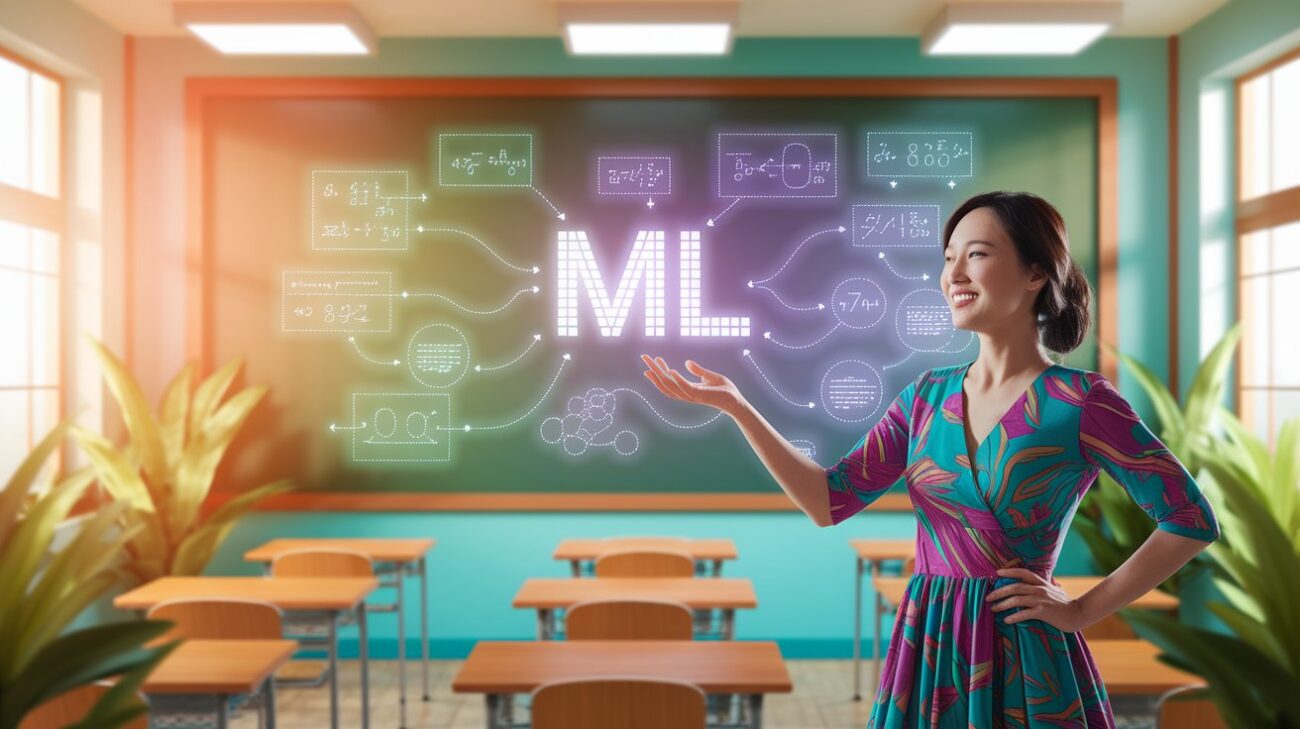1. Introduction to Machine Learning
Machine Learning (ML) is a subset of artificial intelligence that enables systems to learn from data and improve performance without explicit programming. For tech newbies—individuals new to technology or data science—machine learning basics encompass the foundational concepts, techniques, and tools needed to understand and apply ML effectively. These fundamentals include data handling, model training, and evaluation, forming the stepping stones to creating intelligent systems.
This article presents five accessible techniques to help tech newbies master machine learning basics. Written from the perspective of a Machine Learning expert, it offers clear explanations, step-by-step guidance, and practical examples tailored for beginners. By focusing on simplicity and real-world relevance, this guide aims to build confidence and competence, enabling newbies to explore ML’s potential and lay a solid foundation for advanced study in this transformative field.
2. Why Machine Learning Basics Matter in 2025
Machine Learning is poised to redefine technology by 2025, with applications spanning healthcare diagnostics, financial forecasting, and personalized recommendations. Industry projections indicate a surge in demand for ML skills, as businesses increasingly rely on data-driven solutions (Precedence Research). For tech newbies, grasping machine learning basics is a critical entry point, aligning with workforce needs for foundational ML knowledge (World Economic Forum).
Understanding machine learning basics empowers beginners to contribute to innovative projects, even at an entry level. These skills enable the creation of systems that learn from patterns, adapt to new inputs, and solve problems autonomously—abilities that are reshaping industries. This section explores the significance of these fundamentals and their role in preparing newbies for a future where ML is integral to technological advancement.

3. 5 Essential Techniques to Master Machine Learning Basics
3.1 Exploring Data with Python and Pandas
Data is the cornerstone of ML, and understanding it is a key part of machine learning basics. Install Python (python.org) and Pandas (pip install pandas), then load a simple dataset—like the Titanic CSV from Kaggle—using pandas.read_csv(). Examine columns with df.head() and calculate averages with df.mean(). Spend 10-15 hours over a week exploring datasets, identifying missing values with df.isnull().sum(), and visualizing trends with matplotlib (pip install matplotlib).
This technique builds foundational data literacy, essential for ML success. Newbies can apply it to analyze user demographics or sales data, gaining insights that inform model-building processes (see /data-science-tips for more).
3.2 Training a Simple Model with scikit-learn
Model training introduces tech newbies to predictive ML. Install scikit-learn (pip install scikit-learn) and use the Iris dataset (from sklearn.datasets import load_iris). Split data with train_test_split, train a KNeighborsClassifier(n_neighbors=3), and test accuracy with model.score(). Allocate 10-15 hours over a week to experiment with different n_neighbors values and predict flower types.
Mastering this method establishes machine learning basics by teaching supervised learning principles. Beginners can extend it to classify emails as spam or predict customer preferences, laying the groundwork for more complex models.
3.3 Understanding Overfitting with a Decision Tree
Overfitting—when a model learns noise instead of patterns—is a critical concept in machine learning basics. Use scikit-learn to train a DecisionTreeClassifier on a dataset like UCI’s Wine dataset. Set max_depth=3, train with model.fit(), and compare training vs. testing accuracy with model.score(). Spend 10-15 hours over two weeks adjusting depth and visualizing the tree with plot_tree().
This technique helps newbies recognize model generalization, a core ML skill. It applies to scenarios like predicting loan defaults, ensuring models remain practical and reliable (see /ml-techniques for related insights).
3.4 Clustering Data with K-Means
K-Means introduces unsupervised learning, grouping data without labels. Install scikit-learn and apply KMeans(n_clusters=3) to a synthetic dataset generated with make_blobs (from sklearn.datasets import make_blobs). Fit the model and plot clusters with matplotlib. Dedicate 10-15 hours over a week to test cluster numbers and interpret results.
This method enriches machine learning basics by teaching pattern discovery. Newbies can use it to group customers by behavior or detect outliers in sensor data, building intuition for unsupervised ML tasks.
3.5 Evaluating Models with Confusion Matrix
Model evaluation ensures ML predictions are trustworthy. Using scikit-learn, train a LogisticRegression model on a binary dataset (e.g., breast cancer data from load_breast_cancer). Generate a confusion matrix with confusion_matrix(y_test, y_pred) and calculate precision/recall with classification_report(). Spend 10-15 hours over a week analyzing outputs and tweaking models.
This technique solidifies machine learning basics by teaching performance assessment. Beginners can apply it to evaluate diagnostic tools or marketing campaign predictions, ensuring actionable ML outcomes.

4. Challenges in Learning Machine Learning Basics
4.1 Data Complexity
Raw data can be messy, confusing newbies. Spend 5-10 hours cleaning datasets with Pandas, handling missing values with fillna() or dropping rows with dropna().
4.2 Math Intimidation
ML involves math like statistics. Watch Khan Academy videos on probability (1-2 hours weekly) and practice with simple datasets for 5-10 hours to build confidence.
4.3 Tool Setup
Installing libraries may fail due to version issues. Use pip install –upgrade and test in a virtual environment (venv) over 5 hours to resolve conflicts.
4.4 Interpreting Results
Model outputs can be unclear. Spend 5-10 hours studying confusion matrices and accuracy scores to connect results to real-world meaning.
5. Tools and Resources for Machine Learning Basics
5.1 Python
A beginner-friendly language for ML (python.org). Spend 10-15 hours coding simple scripts to explore machine learning basics.
5.2 scikit-learn
A library for ML models (scikit-learn.org). Use it for 10-15 hours to train and evaluate algorithms.
5.3 Pandas
A data analysis tool. Dedicate 10-15 hours to preprocess data for ML tasks.
5.4 Matplotlib
A visualization library. Spend 5-10 hours plotting data and model results.
5.5 Google Colab
A free cloud platform. Test ML code for 5-10 hours with GPU support.
5.6 Kaggle
A resource for datasets and tutorials. Spend 2-3 hours monthly practicing with real data.
5.7 ML Forums
Communities like r/MachineLearning. Engage for 2-3 hours monthly to ask questions and learn.
6. Conclusion
Mastering machine learning basics equips tech newbies with the skills to enter the ML field confidently. Through five techniques—data exploration, model training, overfitting awareness, clustering, and evaluation—beginners can build a strong foundation. These fundamentals unlock opportunities to create intelligent systems, setting the stage for advanced ML exploration. Start today to embrace the power of Machine Learning and grow as a tech innovator.
7. Frequently Asked Questions
7.1 What are machine learning basics?
Machine learning basics include core concepts like data handling, model training, and evaluation, enabling systems to learn from data.
7.2 Why learn machine learning basics in 2025?
By 2025, ML will shape tech innovation. Machine learning basics prepare newbies for high-demand roles in data-driven fields.
7.3 How can tech newbies master machine learning basics?
Start with Python and scikit-learn. Spend 10-15 hours training models to grasp machine learning basics effectively.
7.4 What challenges come with machine learning basics?
Data and math can intimidate. Practice 5-10 hours with simple tools to overcome machine learning basics hurdles.
7.5 Which tool is best for machine learning basics?
scikit-learn is ideal for its simplicity. Spend 10-15 hours mastering machine learning basics with it.
